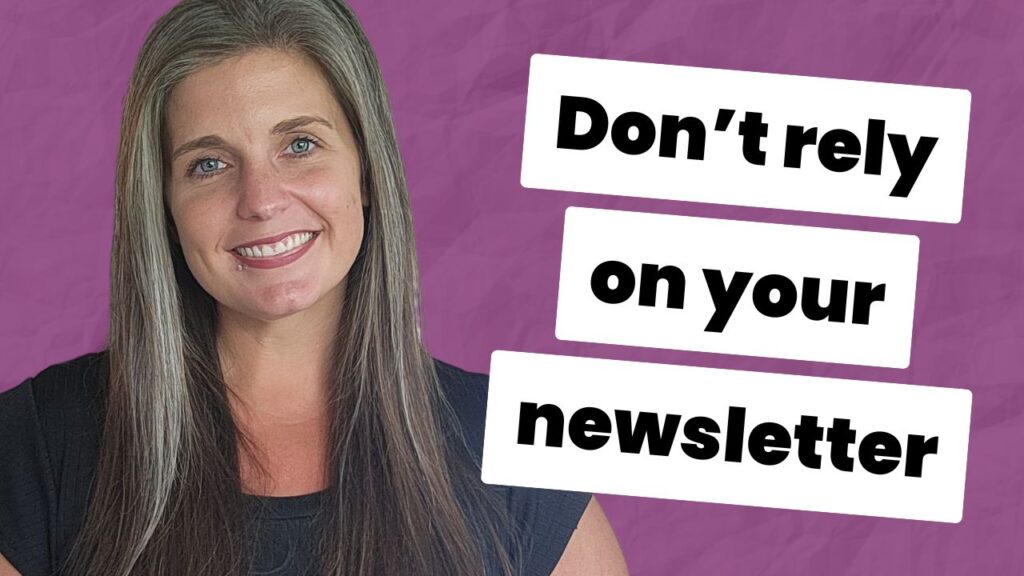Email list decay. You can’t entirely prevent it.
Every company experiences it, including yours. But…
You CAN decrease it.
And you can manage it – enough so that you avoid earning “spam points” (due to consistent and continual low email engagement) and give inbox providers a great reason to keep putting you in the inbox.
This is how.
TRANSCRIPT:
You’ve probably heard me talk about stale email lists and email list decay recently.
By those terms, I mean that over time you will have a segment of subscribers that will go inactive or lapse.
What that means is that they stop opening your emails for one reason or another, but they don’t mark you as spam and they don’t unsubscribe. So they’re just kind of sitting on your email list in this sort of limbo place where they get emails but they don’t engage with them, they don’t open them.
There are lots of things we can do to decrease email list decay in terms of using segmentation and personalization to send more relevant emails.
We can use behavioral-based email automations to send emails when they’re most relevant, and we can also, on the copywriting side, write more compelling subject lines and more compelling body copy inside our emails to make our emails more interesting.
This way, the people who are right for those emails will open and act on them.
But we can’t entirely prevent email list decay, and that’s due to the simple fact that leads and ideal buyers don’t exist in a static state.
Once someone becomes a lead, they’re not always a lead because things change. Our lives and our businesses are in constant flux. For example, someone who follows me because they own a business and they want to learn more about email marketing—if at some point, six months down the line, they either close their business, sell their business, retire, or maybe they go in-house and their job has nothing to do with email marketing, then I’m probably not relevant to them anymore. They don’t need to know anything about email marketing.
That’s a scenario where there’s a natural subscriber decay that I can do nothing about.
So your goal is not necessarily to prevent email list decay. Of course, you want to pull all the levers you can to create more interesting, engaging, and relevant emails.
But on the list decay side, know that some degree of list decay is going to happen.
What we want to do is manage it.
By that, I mean we want to make sure that we are automatically identifying subscribers who we would consider decayed or stale, that they’ve gone inactive for a certain amount of time. Then from there, we can send them a series of automated emails with the goal of getting them to engage in some form or fashion or unsubscribe themselves. At the end of that series of emails, we can then decide to unsubscribe them like a courtesy unsubscribe because we don’t want to continue to send emails to people who don’t open them. Over time, the larger that segment is, the more it hurts our sender reputation, which tells Google that our emails deserve to be in spam even though they’re not spam.
So that’s called a re-engagement strategy, and you can do this automated, or you can do it manually.
But why do it manually if you can automate it?
That’s the best way I know to stay on top of your email list decay, at least the part that you can’t really do anything about. If you’re interested, I have a new email workshop that will teach you this simple email automation so that you, too, can prevent email list decay from becoming a bigger issue and give your emails, especially your sales emails, the best chance of landing in the inbox.
If you like all the details, visit this page.


